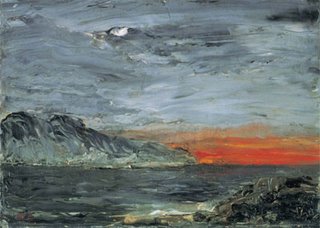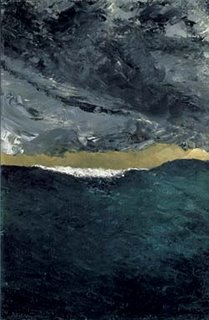




‘I am everywhere, in the ocean which is my blood, in the hills which are my bones’
-August Strindberg
Strindberg was a painter and experimental photographer, as well as a writer...I didn't know about all this until I was tipped off by my pal DS. Thanks!
Check out this excellent article by Barry Schwabsky:
http://www.findarticles.com/p/articles/mi_m1248/is_4_90/ai_84669344
Quotes from the article:
"the very fact that [Strindberg] was self-taught, that he was an amateur, seems to have freed him from all sorts of preconceptions about what a picture should be."
"[There is an] analogy between the materiality of paint and the physical sensation of place..."
"[He wanted to] imitate nature in an approximate way, imitate in particular nature's way of creating." To this end--well before the birth of John Cage or the Surrealists' proclamation of the doctrine of psychic automatism, and three years before Stephane Mallarmes publication of "Un Coup de des" began to edge the theme of chance toward the heart of European esthetics--Strindberg advocated the use of chance methods in artistic creation as a way of realizing a work in which "the whole reveals itself as a wonderful mixture of the conscious and unconscious."
"Strindberg's art was driven by the desire for an unmediated vision, a continuity between thought and matter."
"It can be argued that this is simply the fundamental desire at the heart of all painting: the desire to breathe life into mere colored mud, and for inanimate matter to become transparent to thought."











